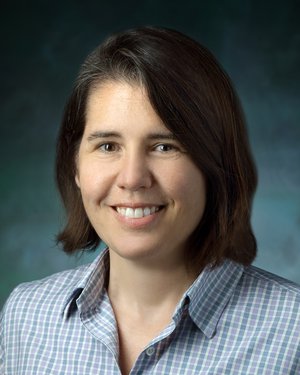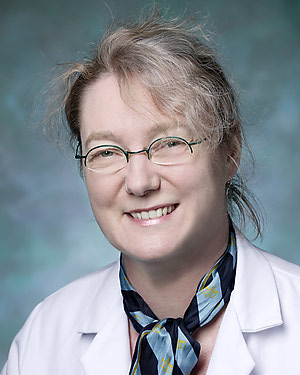Research Lab Results
-
Cochlear Center for Hearing and Public Health
The Cochlear Center for Hearing and Public Health is dedicated to training clinicians, researchers and public health experts to study and address the impact that hearing loss has on older adults and public health. We aim to make measured local, national and global impacts through a macro level (e.g., public policy legislation), micro level (e.g., programs to deliver hearing care to individuals in a particular community), and everywhere in between (e.g., influential research publications, etc.) to adhere to our center’s overall mission and vision of effectively optimizing the health and function of an aging society and become the premier global resource for ground-breaking research and training on hearing loss and public health. -
Cochlear Neurotransmission Group
The Cochlear Neurotransmission Group studies the generation and propagation of neural signals in the inner ear. Our laboratories use biophysical, electrophysiological, molecular biological and histological methods to determine fundamental molecular mechanisms by which neurotransmitters are released from primary sensory cells ('hair cells') to excite second order neurons carrying information to the brain. We apply these same techniques to study inhibitory feedback produced by brain neurons that project to and regulate the sensitivity of the cochlea. -
Glowatzki Lab
Research in the Glowatzki Lab focuses on the auditory system, with a particular focus on synaptic transmission in the inner ear. Our lab is using dendritic patch clamp recordings to examine mechanisms of synaptic transmission at this first, critical synapse in the auditory pathway. With this technique, we can diagnose the molecular mechanisms of transmitter release at uniquely high resolution (this is the sole input to each afferent neuron), and relate them directly to the rich knowledge base of auditory signaling by single afferent neurons. We study pre- and post-synaptic mechanisms that determine auditory nerve fiber properties. This approach will help to study general principles of synaptic transmission and specifically to identify the molecular substrates for inherited auditory neuropathies and other cochlear dysfunctions. -
Bowditch Research Group
Bowditch Research Group conducts research regarding speech discrimination in background noise, cochlear implants and osseointegrated hearing devices
Principal Investigator
Department
-
Vestibular NeuroEngineering Lab
Research in the Vestibular NeuroEngineering Lab (VNEL) focuses on restoring inner ear function through “bionic” electrical stimulation, inner ear gene therapy, and enhancing the central nervous system’s ability to learn ways to use sensory input from a damaged inner ear. VNEL research involves basic and applied neurophysiology, biomedical engineering, clinical investigation and population-based epidemiologic studies. We employ techniques including single-unit electrophysiologic recording; histologic examination; 3-D video-oculography and magnetic scleral search coil measurements of eye movements; microCT; micro MRI; and finite element analysis. Our research subjects include computer models, circuits, animals and humans. For more information about VNEL, click here. VNEL is currently recruiting subjects for two first-in-human clinical trials: 1) The MVI Multichannel Vestibular Implant Trial involves implantation of a “bionic” inner ear stimulator intended to partially restore sensation of head movement. Without that sensation, the brain’s image- and posture-stabilizing reflexes fail, so affected individuals suffer difficulty with blurry vision, unsteady walking, chronic dizziness, mental fogginess and a high risk of falling. Based on designs developed and tested successfully in animals over the past the past 15 years at VNEL, the system used in this trial is very similar to a cochlear implant (in fact, future versions could include cochlear electrodes for use in patients who also have hearing loss). Instead of a microphone and cochlear electrodes, it uses gyroscopes to sense head movement, and its electrodes are implanted in the vestibular labyrinth. For more information on the MVI trial, click here. 2) The CGF166 Inner Ear Gene Therapy Trial involves inner ear injection of a genetically engineered DNA sequence intended to restore hearing and balance sensation by creating new sensory cells (called “hair cells”). Performed at VNEL with the support of Novartis and through a collaboration with the University of Kansas and Columbia University, this is the world’s first trial of inner ear gene therapy in human subjects. Individuals with severe or profound hearing loss in both ears are invited to participate. For more information on the CGF166 trial, click here. -
Nae-Yuh Wang Lab
The Nae-Yuh Wang Lab concentrates on a wide range of multicenter studies and randomized controlled trials. Recent studies have focused on pediatric cochlear implantation and longitudinal data analysis. One recent study found that partnering with primary care providers to deliver weight loss programs may promote greater participant satisfaction and weight loss. Another active study is assessing the effectiveness of promising interventions to reduce race disparities in live donor kidney transplantation.
-
Fuchs Laboratory
The Fuchs Laboratory uses cellular electrophysiology, immunolabeling and electron microscopy to study synaptic connections between sensory hair cells and neurons in the cochlea. One effort focuses on an unusual cholinergic receptor that mediates efferent inhibition of hair cells, driving discovery of the molecular mechanisms, and offering a target for protection against acoustic trauma. A second topic concerns the small number of unmyelinated ""type II"" afferent neurons whose synaptic connectivity and response properties argue for a role as the pathway for noxious (too loud) sound. Our studies are motivated by curiosity about fundamental mechanisms, and to provide a foundation for understanding cochlear pathogenesis. -
Carey Research Group
John Carey’s Research Group conducts research regarding diseases of the inner ear that affect both balance and hearing mechanisms. Key interests include superior semicircular canal dehiscence syndrome (SCDS), the normal vestibular reflexes and how they change with age, novel intratympanic treatments (i.e., middle ear injections) for conditions like Menière’s disease and sudden hearing loss, and the mechanisms of vestibular migraine. With Lloyd Minor, Dr. Carey helped develop the operation to repair the superior canal in patients with SCDS using image-guided surgery. Dr. Carey has been funded by the National Institutes of Health – National Institute on Deafness and Other Communication Disorders to study inner ear balance function in Menière’s disease and steroid treatment of sudden hearing loss.
-
Doetzlhofer Laboratory - Center for Sensory Biology
Auditory hair cells, located in the inner ear cochlea, are critical for our ability to detect sound. Research in Dr. Doetzlhofer's laboratory focuses on ways to identify and characterize the molecular mechanisms of hair cell development in the mammalian auditory system. She is also seeking to identify the molecular roadblocks preventing mammalian hair cell regeneration.
-
Dwight Bergles Laboratory
The Bergles Laboratory studies synaptic physiology, with an emphasis on glutamate transporters and glial involvement in neuronal signaling. We are interested in understanding the mechanisms by which neurons and glial cells interact to support normal communication in the nervous system. The lab studies glutamate transport physiology and function. Because glutamate transporters play a critical role in glutamate homeostasis, understanding the transporters' function is relevant to numerous neurological ailments, including stroke, epilepsy, and neurodegenerative diseases like amyotrophic lateral sclerosis (ALS). Other research in the laboratory focuses on signaling between neurons and glial cells at synapses. Understanding how neurons and cells communicate, may lead to new approaches for stimulating re-myelination following injury or disease. Additional research in the lab examines how a unique form of glia-to-neuron signaling in the cochlea influences auditory system development, whether defects in cell communication lead to certain hereditary forms of hearing impairment, and if similar mechanisms are related to sound-induced tinnitus.





